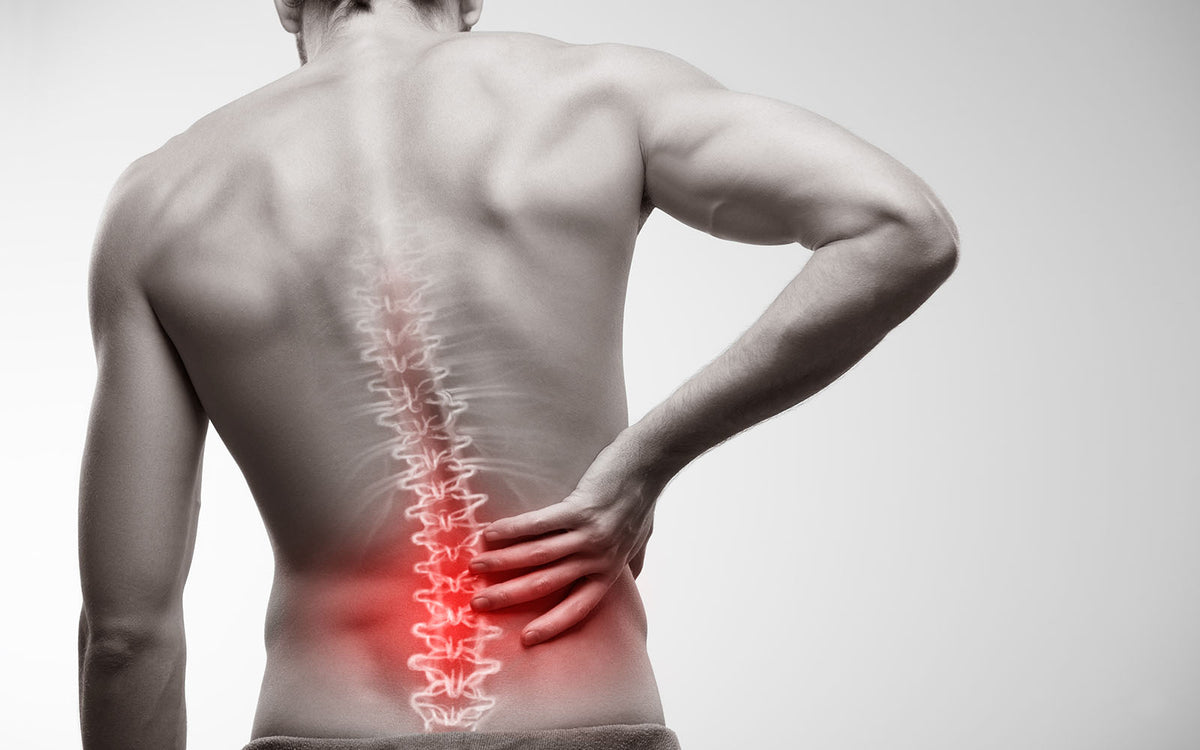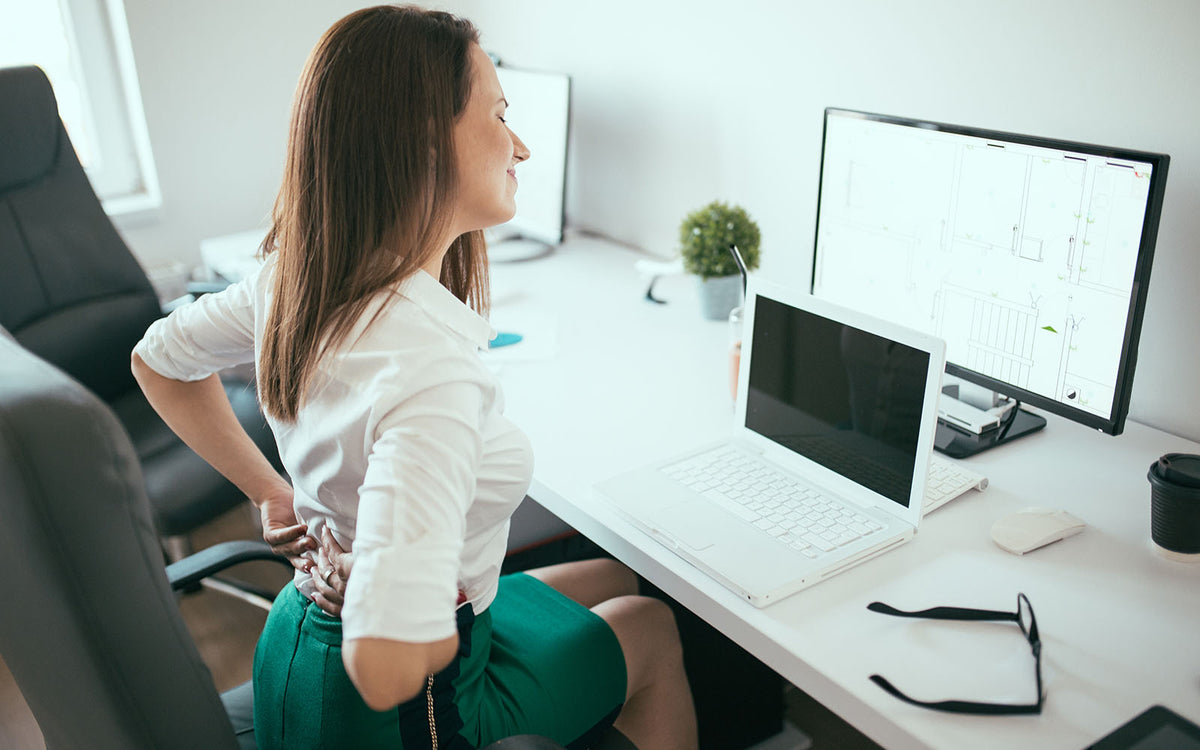How to Relieve Back Pain

Back pain relief has a number of critical elements:
- health professional advice;
- education about pain physiology and posture;
- stretching – this is where BakBalls and other BakPhysio products come in;
- stability and strengthening exercises; and
- staged return to normal exercise.
Health Professional Advice
Health professionals, such as physiotherapists, osteopaths and chiropractors are perfectly positioned to diagnose the ‘problem’ and provide optimal management of your condition by addressing the causes of your back pain. They will also educate you about ‘pain physiology’ and importance of maintaining ideal posture. Your treating practitioner can prescribe a spinal care program of stretches, strengthening exercises and a conditioning program to relieve pain. To find your local physiotherapist visit the Australian Physiotherapy Association website. You can also obtain accurate and comprehensive injury advice from a qualified expert physiotherapist online at Online Physio.
Education
Research has shown that pain physiology education can actually contribute to pain relief by increasing pain thresholds by reducing fear of movement and demystifying pain (Moseley, 2004)¹. Postural education is also critical to ensure ideal postures are maintained in sitting and standing for the majority of the day or else eventually your back and neck will hurt. When sitting, you should stand and stretch (or lie down) every 30 minutes to take the strain off your discs and allow them to recover from unavoidable gravitational compression. Similarly, if standing for prolonged periods you need to sit or lie down every 30 minutes to allow your back to recover.
To prevent pain from bending and lifting, it is imperative that you bend predominantly from the legs and maintain a straight spine. But it isn't only bending to lift heavy objects that can lead to back pain and injury. Picking up small objects off the floor repeatedly over the long term (e.g. remote controls) can also lead to back pain if less than ideal bending techniques are used. Therefore, it is vital when bending that good movement patterns are used with a straight spine at all times where you feel a stretch down the back of your legs when you bend over (like an Olympic weightlifter).
Read our article 10 Quick Tips for Back Care.
Stretching
Prolonged sitting with a slouched posture can lead to stiffness in the spinal joints and tightness in the back muscles. Unfortunately, long term slouched sitting can actually result in permanent changes to discs and bones in the spine. BakBalls are the ideal preventative solution and were invented by Mark Alexander, Sports Physiotherapist to the Australian Olympic team, to reverse the stiffness developed from poor sitting posture. BakBalls are also a self-treatment device that relieves back pain by replicating a physiotherapy treatment or massage.
Watch this video to learn more about BakBalls and how they can relieve back pain:
Read our article How to use BakBalls to learn how to relieve pain and improve posture.
Below are some examples of stretches that you can do at work to maintain good posture. Chairs, pillows, and mattresses must all be in good condition and supportive.
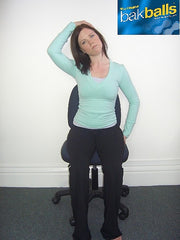
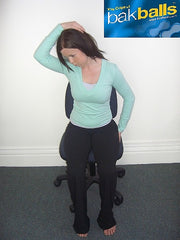
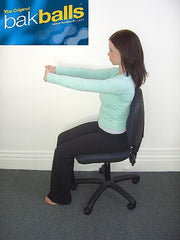

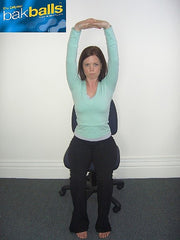
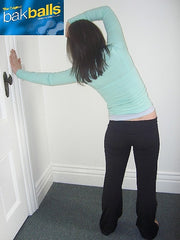

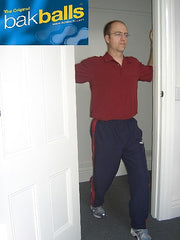
Strengthening and stability
Specific stability exercises prescribed by a physiotherapist are vital to maximise the health of your spine and relieve back pain. Research shows that within 24 hours after experiencing back pain, the muscles protecting the spine can reduce in size and activation (Hides, 2008)². Physiotherapists need to prescribe targeted exercises to reverse the effects of pain. To find your local physiotherapist visit the Australian Physiotherapy Association website.
General gym programs and strengthening exercises are also critical to prevent and relieve back pain. If you exercise for 3 hours a week, this has been shown to reduce the incidence of back pain (Harreby, 1997)³.
Staged return to normal exercise
It is critical to stage or gradually increase the levels of exercise to prevent aggravation of back pain. Common sense says to increase exercise levels over time to prevent doing too much, too soon. For example, after an episode of back pain don't attempt to garden for 2 hours or walk 10km. Start from a low base, and gradually increase the duration and intensity of exercise. The 10% rule is a good rule of thumb: each week increase the duration OR intensity of exercise by 10%. Finally, back pain sufferers need to take responsibility for their own back pain as the most common causes of back problems are sustained postures, bending and lifting activities which are within one's control.
Following these simple guidelines can reverse the effects of back pain and start a positive virtuous cycle back to pain-free normal movement.
References
1) Moseley, G. L. (2004). Evidence for a direct relationship between cognitive and physical change during an education intervention in people with chronic low back pain. European Journal of Pain, 39-45.
2) Hides, J. et al. (2008). The effect of chronic low back pain on the size and contraction of the lumbar multifidus muscle. Manual Therapy, 496-500.
3) Harreby M. et al. (1997). Low back pain and physical exercise in leisure time in 38-year-old men and women: a 25-year prospective cohort study of 640 school children. Eur Spine J. 6:181–6.


